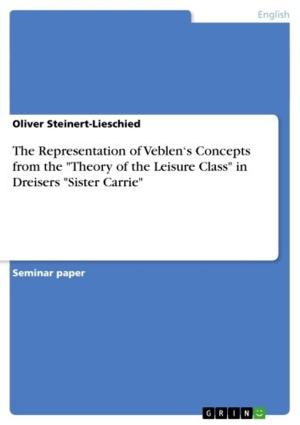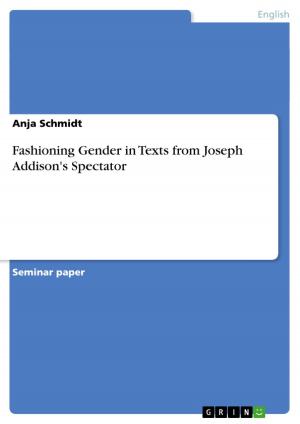Garment Workers in New York City's Chinatown after 1965
Nonfiction, Entertainment, Drama, Anthologies| Author: | Stephanie Machate | ISBN: | 9783638770491 |
| Publisher: | GRIN Publishing | Publication: | June 16, 2007 |
| Imprint: | GRIN Publishing | Language: | English |
| Author: | Stephanie Machate |
| ISBN: | 9783638770491 |
| Publisher: | GRIN Publishing |
| Publication: | June 16, 2007 |
| Imprint: | GRIN Publishing |
| Language: | English |
Seminar paper from the year 2005 in the subject American Studies - Culture and Applied Geography, grade: 2,0, Dresden Technical University, 3 + 1 online entries in the bibliography, language: English, abstract: In this research paper the focus shall be on Chinese workers in the garment factories of New York City's Chinatown as an example of immigrant workers in the United States. After the Immigration Act of 1965, which abolished the national origin system and gave priority to the reunification of families, chain immigration in the United States of America started in large numbers. The most visible beneficiaries were the Asians because the quota system was abandoned for them. A lot of Chinese immigrants, especially women, entered the United States with this chain immigration. The high number of women amongst the immigrats was a reason that the former bachelor's society - which means that the Chines male population outnumbered Chinese women in New York City on a large scale - turned into an almost well - balanced one. The labor force of the newly arrived women enabled the growth of New York City's garment industry. According to some statistics of Min Zhou and Regina Nordquist, the concentration of immigrant Chinese women in the garment industry was - and still is - extraordinary. Almost 85% of the work force in Chinatown's garment industry are immigrant women, and the largest group of them are Chinese immigrant women (Zhou/ Nordquist 262). Because of the large-scale immigration after 1965 and the large supply of female work force, the garment industry of New York City's Chinatown continued to be based on low-cost immigrant labor (Zhou/ Nordquist 261). Overall, more than half of Chinese women find jobs in garment factories. Because of the obvious dominance of Chinese immigrant women's labor force in the garment industry, this research paper will concentrate on them. Although these women earn only minimum or even lower wages, the labor force participation rate of them is exceptional high: 73% (Zhou/ Nordquist 264). Despite long wrking days and bad working conditions, it appears that Chinese garment workers do not feel exploited. In the following we will examine the situation of Chinese garment workers a little bit more in detail.
Seminar paper from the year 2005 in the subject American Studies - Culture and Applied Geography, grade: 2,0, Dresden Technical University, 3 + 1 online entries in the bibliography, language: English, abstract: In this research paper the focus shall be on Chinese workers in the garment factories of New York City's Chinatown as an example of immigrant workers in the United States. After the Immigration Act of 1965, which abolished the national origin system and gave priority to the reunification of families, chain immigration in the United States of America started in large numbers. The most visible beneficiaries were the Asians because the quota system was abandoned for them. A lot of Chinese immigrants, especially women, entered the United States with this chain immigration. The high number of women amongst the immigrats was a reason that the former bachelor's society - which means that the Chines male population outnumbered Chinese women in New York City on a large scale - turned into an almost well - balanced one. The labor force of the newly arrived women enabled the growth of New York City's garment industry. According to some statistics of Min Zhou and Regina Nordquist, the concentration of immigrant Chinese women in the garment industry was - and still is - extraordinary. Almost 85% of the work force in Chinatown's garment industry are immigrant women, and the largest group of them are Chinese immigrant women (Zhou/ Nordquist 262). Because of the large-scale immigration after 1965 and the large supply of female work force, the garment industry of New York City's Chinatown continued to be based on low-cost immigrant labor (Zhou/ Nordquist 261). Overall, more than half of Chinese women find jobs in garment factories. Because of the obvious dominance of Chinese immigrant women's labor force in the garment industry, this research paper will concentrate on them. Although these women earn only minimum or even lower wages, the labor force participation rate of them is exceptional high: 73% (Zhou/ Nordquist 264). Despite long wrking days and bad working conditions, it appears that Chinese garment workers do not feel exploited. In the following we will examine the situation of Chinese garment workers a little bit more in detail.















